Sea of Stars: The Future of the JRPG is Here
This JRPG present is looking like the future
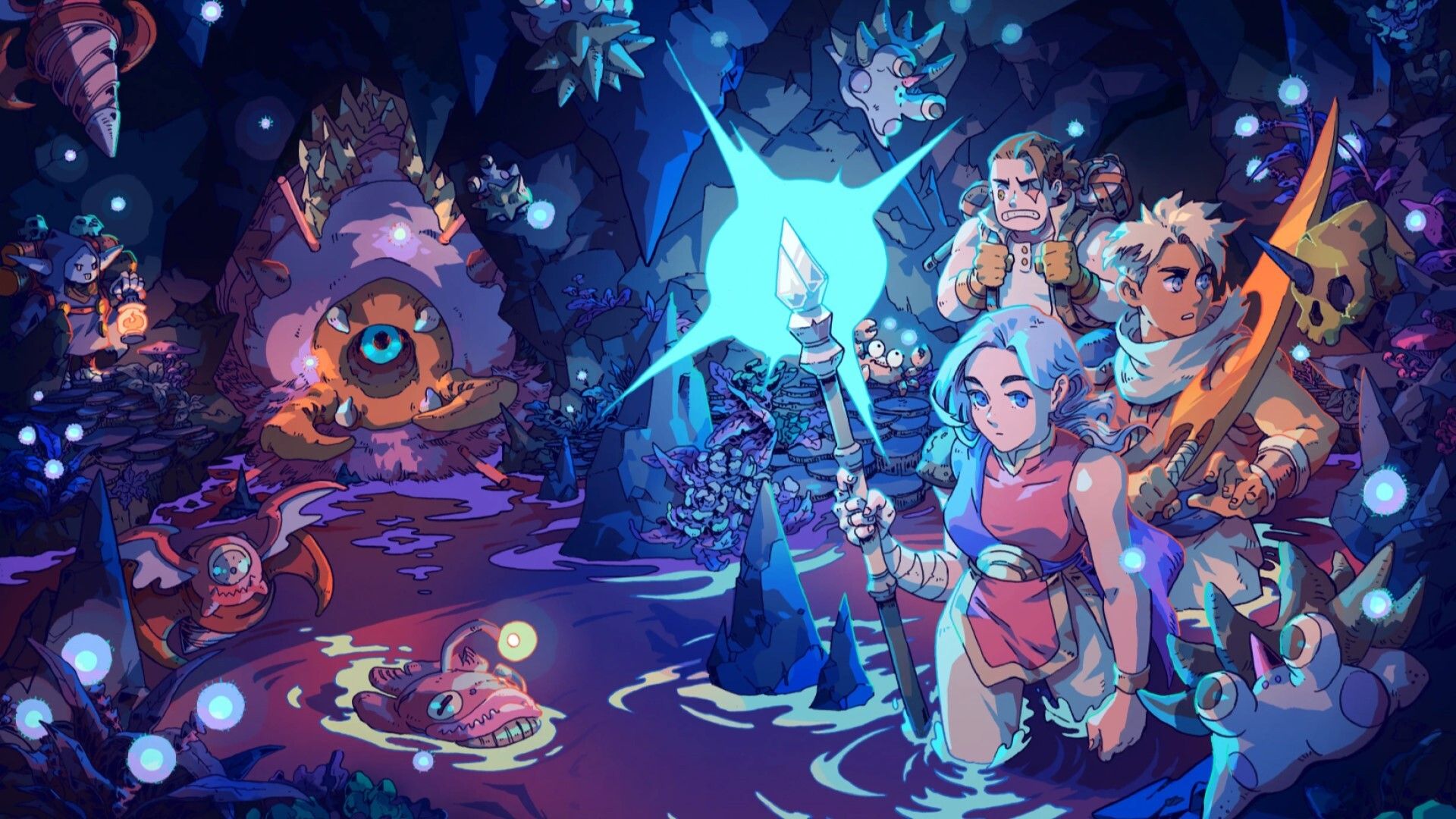
I've lost count of the number of fools who've announced the death of the JRPG.
25 years ago, some of the biggest games in the world were JRPGs. The wise men in the industry celebrated by declaring that the future was action RPGs, that in fact "Everything Is An RPG Now", and that the games that I grew up on were functionally obsolete. The entire genre all but disappeared for two console generations, kept alive in little preserves on the handheld systems and by passionate loyalists in the burgeoning indie market.
But all of the grand declarations never changed the fact that Chrono Trigger is one of the best games ever made. And now we have Sea of Stars, a game trying very hard to be the new Chrono Trigger and coming far closer than I thought anyone could.
Reports of the JRPG's death have been greatly exaggerated. Here's the proof.
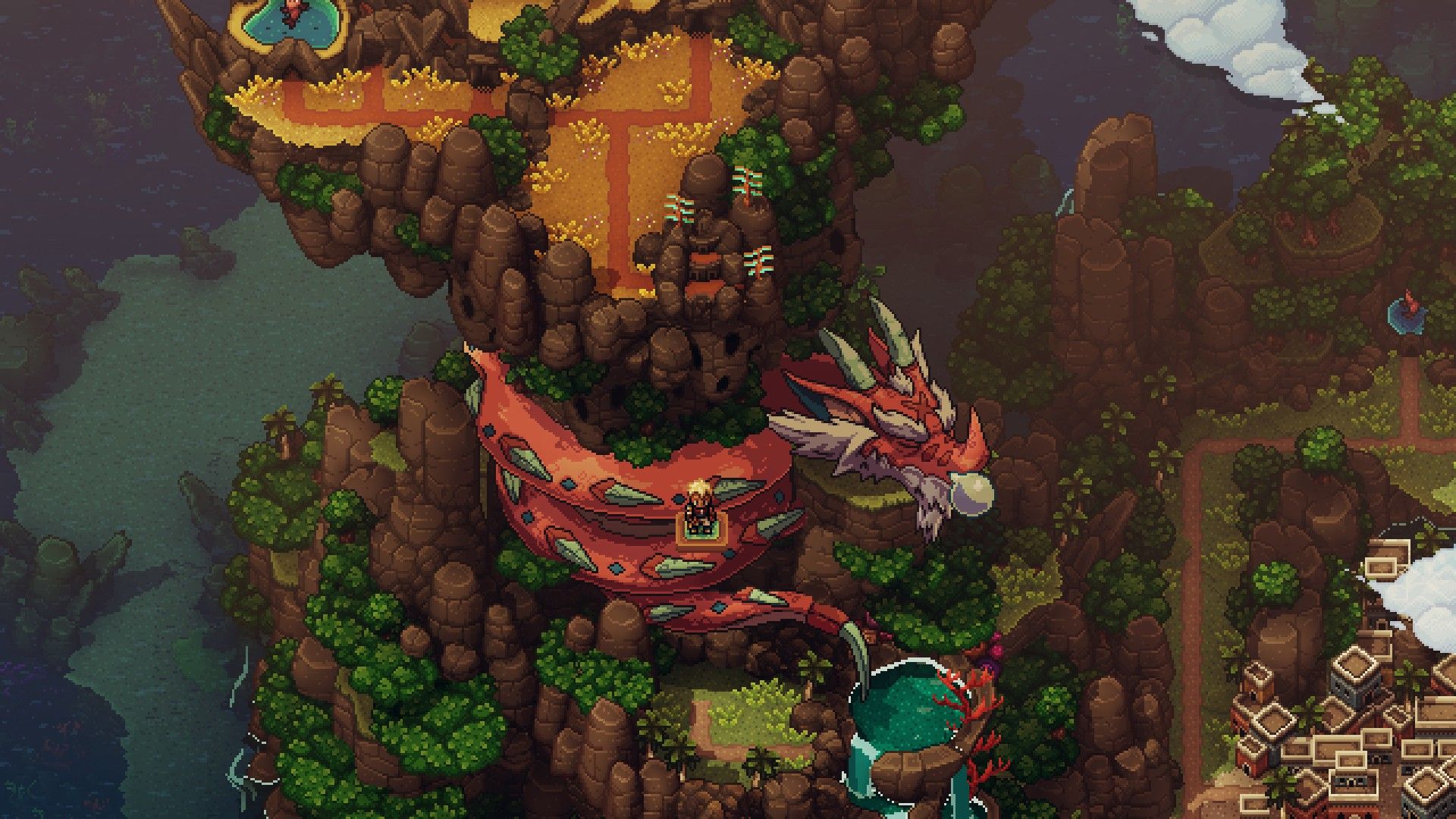
In ages past, a powerful alchemist known as the Fleshmancer unleashed his unnatural horde on the world. The Fleshmancer has since departed, but the Dwellers - the greatest of his minions, the seeds of his wrath - still exist. It falls to a special order, a group gifted in the magic of sun and moon, to hunt down the Dwellers at the time of their greatest weakness.
Zale and Valere are the latest to be inducted into this order, but they are more special than most. Delivered to the surface world by a great bird, they are the Children of the Solstice, considered to be especially gifted in the magical arts. Though inexperienced, they've already been tasked with finding and defeating one of the Dwellers. Along with their childhood friend Garl - an immature if good-hearted man with gifts for combat and cooking - they'll have to continue the work of keeping the end of the world at bay.
That's only part of the story, though. There are other actors on the stage with their own motives, all waiting to complicate the quest of the Children of the Solstice.
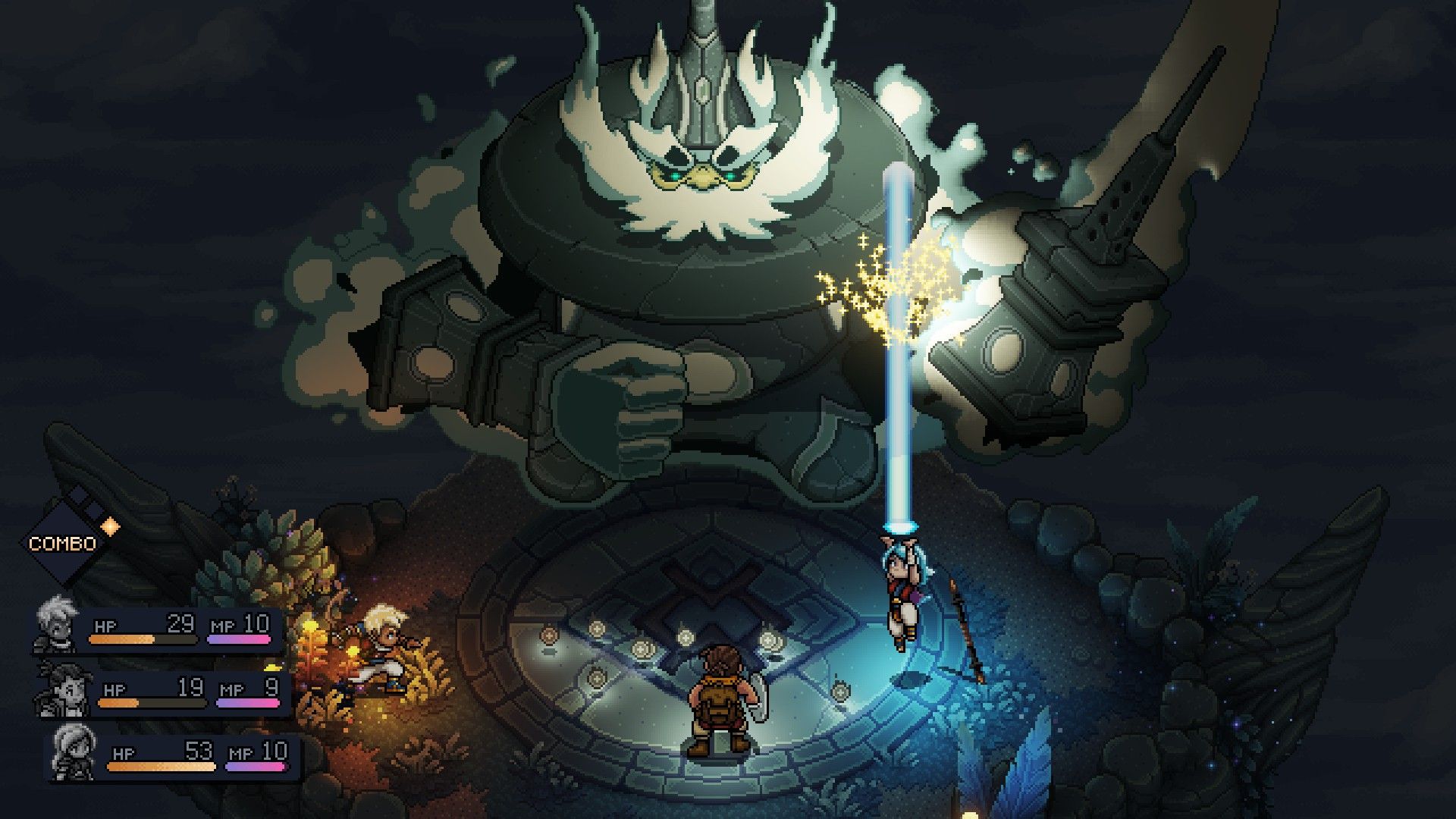
Sea of Stars is a JRPG and comes packing everything you'd expect from one, with turn-based combat, a party that levels up as they defeat enemies, item management, bosses, the works. There are, however, some innovations that make combat a lot more interesting than you might expect.
The game employs a timing-based system similar to what you'd see in the Paper Mario games, though it's not as central to the overall system. Nevertheless, hitting the action button at the right time will cause a character to deliver a follow-up attack or brace to reduce damage from an incoming attack. This is true for spells as well, many of which have an associated action to increase their effectiveness.
MP is both more and less limited than in most similar games. None of the characters can get off more than a few spells at a time before running dry. However, regular attacks also regenerate MP. This encourages a cycle of casting spells until a character runs out of MP, then switching over to regulars for a while. However, there's some risk added by the "Lock" system. Enemies forecast their special attacks, and hitting them with certain elements can mitigate or cancel out those special attacks - but only if you have the resources to hit those elements.
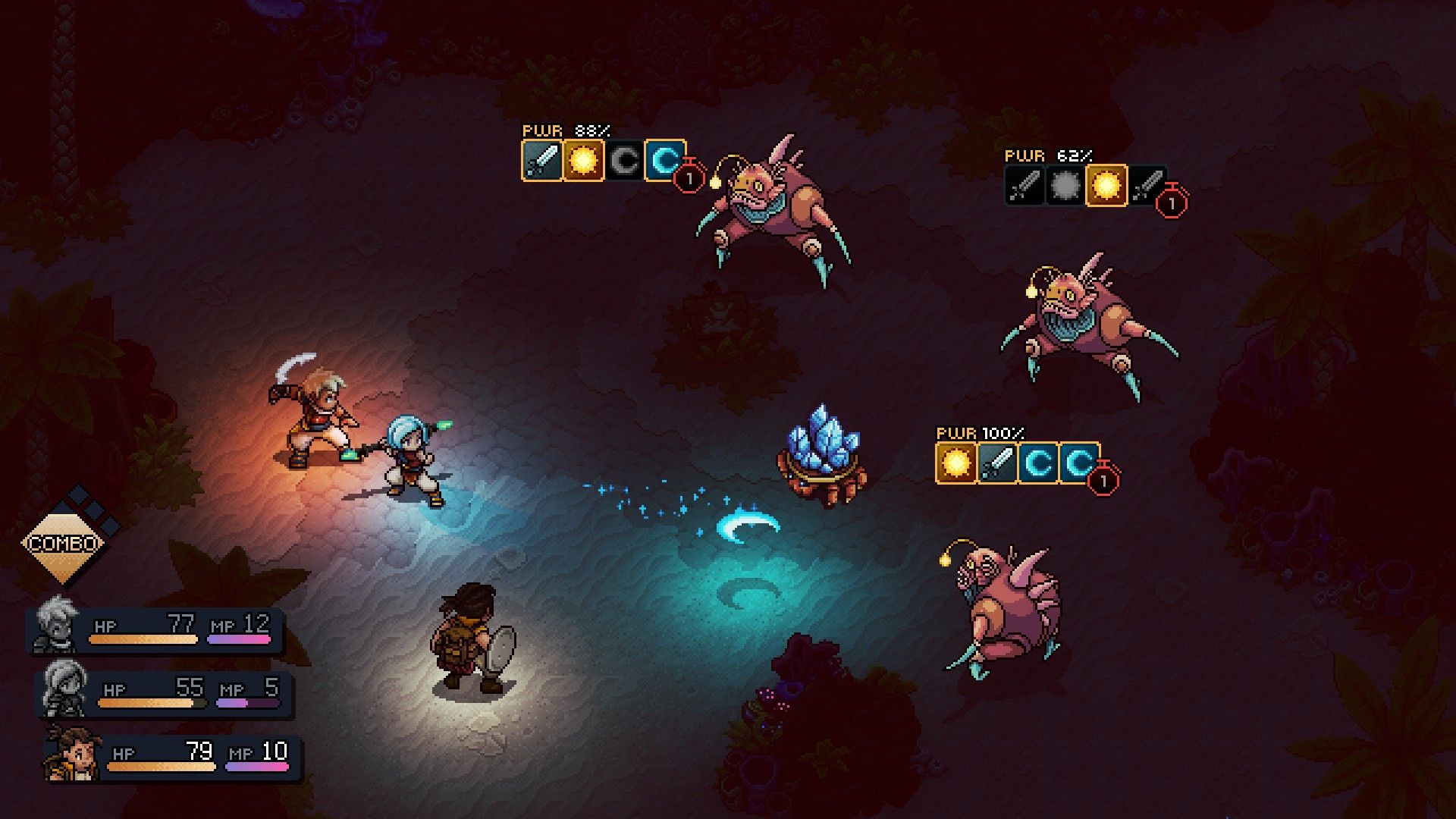
Fortunately, you have the "Boost" system to help out here. Hitting enemies with regular attacks also unleashes "live mana" that any character can gather to increase the power of their abilities while also empowering their regular attacks with elemental energy. Since it often takes a mix of physical and magical elements to counter an enemy attack, boosting becomes critical not just for increasing damage but for managing the battlefield.
This isn't even the whole thing. I haven't gotten around to the combo bar that builds up as characters inflict damage and allows for MP-free double attacks, or the importance of enemy positions (including the ability possessed by some characters to move enemy units around so that area attacks will hit more of them), or the various subtleties in healing that make keeping characters alive harder but also more forgiving. There's a lot going on here, and yet it will still feel very natural to any JRPG veteran.
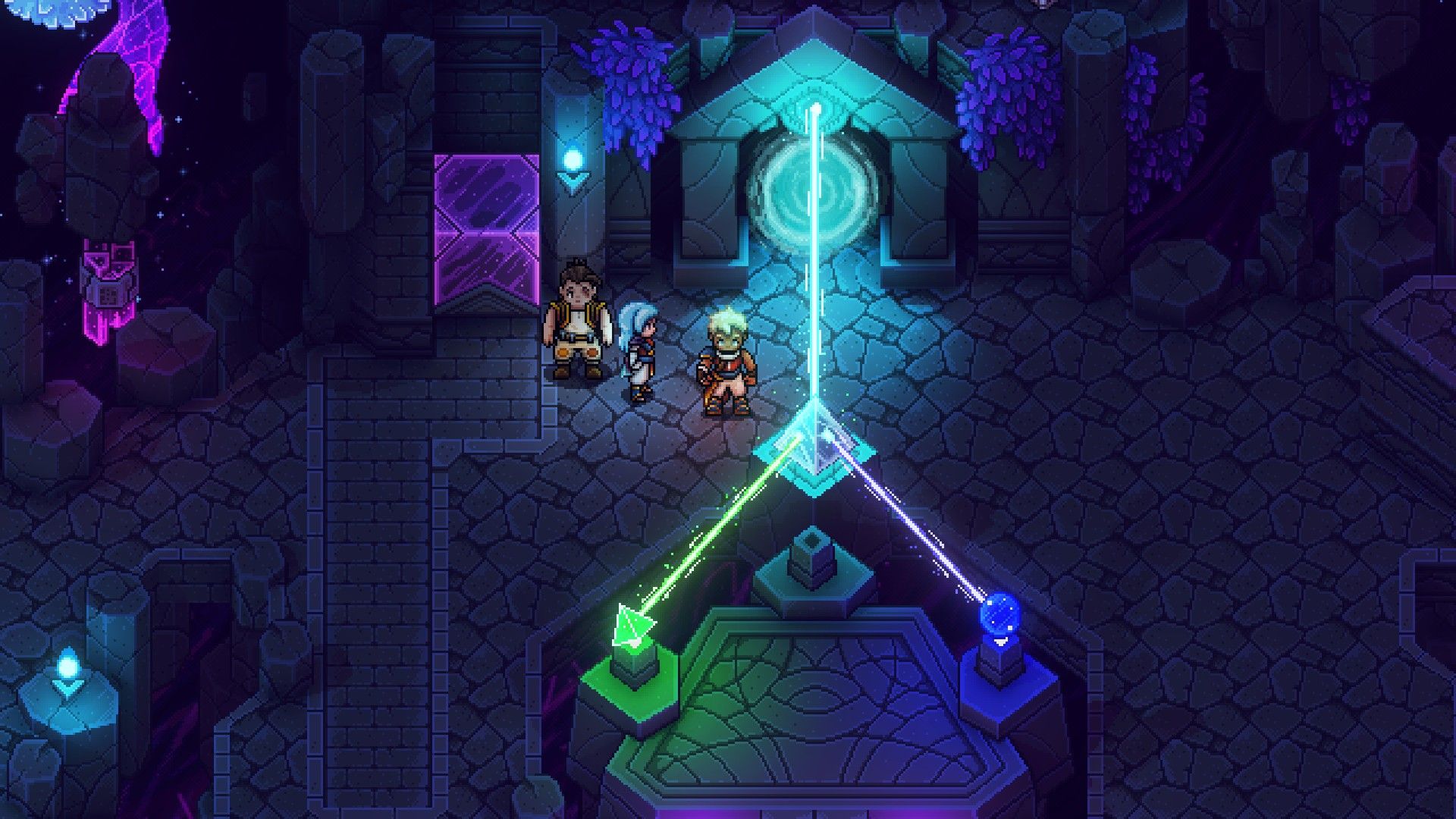
It's at this point that I should say something about the visuals, though if I went into detail I'd be here all day.
Unlike most neo-retro games, Sea of Stars is not trying to copy the aesthetics of a particular system or game. Yes, the visuals are undeniably inspired by those in Chrono Trigger, but this is not a "spiritual successor" trying to look like Chrono Trigger. The developers made full use of techniques for lighting, shadows, shading, and other effects that would not have been possible on the SNES or even the PlayStation.
Likewise, the sprite work is out of this world, both for the characters and the backgrounds. Character sprites are large, well-animated, and colorful, and the worlds they inhabit are highly detailed. It helps that Sea of Stars goes beyond the typical JRPG biomes and goes to some wondrous and surreal places. And for cutscenes where sprites aren't enough, there are short, traditionally animated sequences that - while brief - are very charming and stylish.
Honestly, this might be the best-looking 2D sprite-based game I've ever seen anywhere.
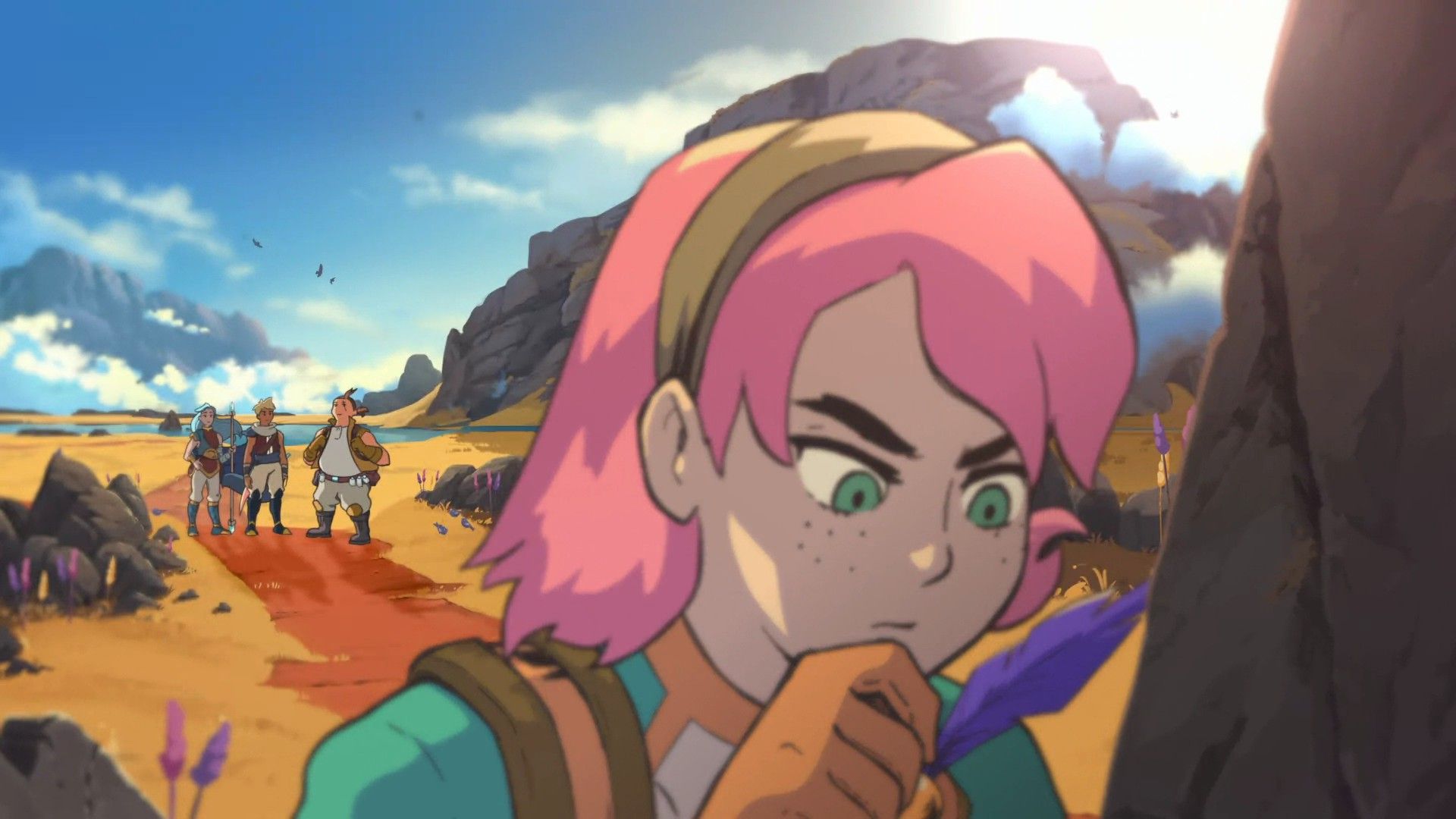
All this time I've spent rambling and I still haven't touched on everything in Sea of Stars. I haven't mentioned Wheels, the game-within-a-game played in various taverns throughout the game. I haven't gotten to cooking, a necessary system in a game where money is limited and healing can be a challenge. There is so much going on here and, as of this review, I haven't even seen the half of it.
If you have any lingering passion for the genre, this is a must-buy. If you found even a moment of enjoyment in Chrono Trigger or any Final Fantasy game, you owe it to yourself to see where these games are headed.
